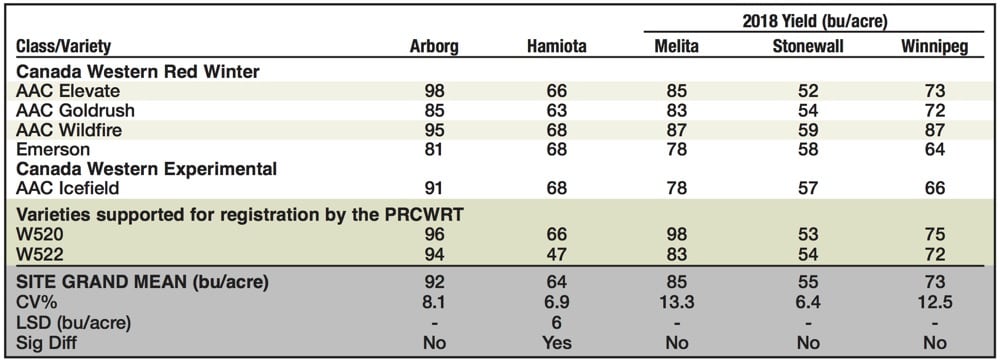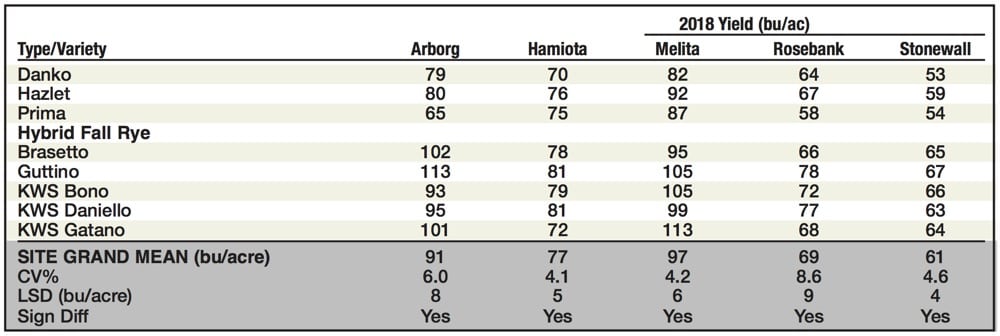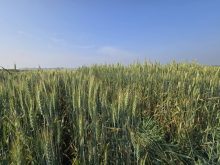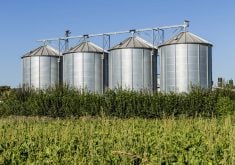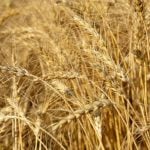MCVET (Manitoba Crop Variety Evaluation Team) in collaboration with Glacier FarmMedia has been publishing winter cereal data collected from trials shortly after harvest to help farmers and seed growers make variety decisions during fall planting.
In 2018, yield data is being published for eight fall rye and seven winter wheat varieties from five locations across Manitoba. Agronomic and disease-resistance information for the winter wheat and fall rye varieties tested by MCVET in 2017-18 is provided in the Variety Description tables.
Things to keep in mind when looking through the data:
Read Also
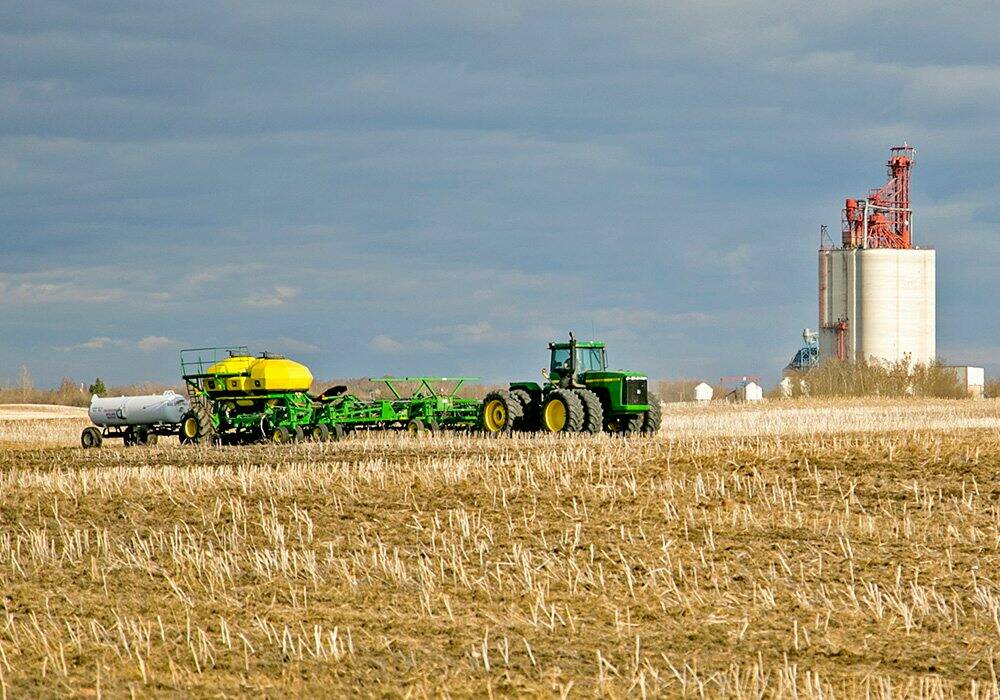
Better data on fertilizer emissions with the Internet of Things
Web of soil sensors looks for live insights on farm greenhouse gas emissions and nitrogen fertilizer application.
Comparing yield — Yields provided in the yield comparison tables (see further down) allow producers to make comparisons between varieties at each site, using the statistical information provided in the grey-shaded area located at the bottom of the table.
Comparing yield differences — To know if yield differences mean something, look at Significant Difference (Sig Diff) for each site, indicated as yes/no. If ‘yes’ then yield differences between varieties indicate real differences in yield. When a site has shown significant difference, then the LSD or Least Significant Difference value is also shown, indicating the number of bushels per acre that varieties must differ by to be considered significantly different. For example, fall rye varieties at the Hamiota site must differ by more than five bushels per acre to be considered significantly different. If we compare Danko to the other varieties, it is significantly lower yielding than other varieties, except Prima and KWS Gatano, where even though it yields lower, it is not significant.
Compare long-term yields —The yields at a single site, in a single year can be a poor indicator of how the variety may perform in your field in 2019. Looking at long-term yield data or yields collected over many years and locations, gives a better indication of potential performance over a variety of environmental conditions. When choosing a new variety it is best to look at past Seed Manitoba guides, available at www.seedmb.ca, to see how consistent a variety performs across years and locations.
Agronomics and disease resistance — While yield is generally the first information farmers look at, characteristics such as maturity, height, standability, winter hardiness and disease resistance are critical to maximizing yield potential and quality. Disease levels were low in winter cereals in 2018, but diseases such as fusarium head blight can have a large impact on yield and quality.
The variety description tables provide information on winter wheat and fall rye varieties tested by MCVET in 2017-18. Note that long-term yield in the bottom two tables, protein (for winter wheat), and site years tested does not include the 2018 data.


Seed Manitoba 2019
The Seed Manitoba guide will continue to provide the latest unbiased information on post-registration variety performance of many crop types in Manitoba. Seed Manitoba is a collaborative effort between the Manitoba Seed Growers’ Association, Manitoba Agriculture, and the Manitoba Co-operator. Seed Manitoba 2019 will be available in late November and will contain protein data for winter wheat and long-term yield data for winter wheat and fall rye.
Anne Kirk is Manitoba Agriculture’s cereals crops specialist. Contributors to the early release of this data include MCVET co-ordinator Chami Amarasinghe, crop industry development manager Anastasia Kubinec, diversification specialist Craig Linde, manager of research Patti Rothenburger and University of Manitoba wheat breeder Anita Brule Babel, as well as MCVET site contractors and funding agencies.


